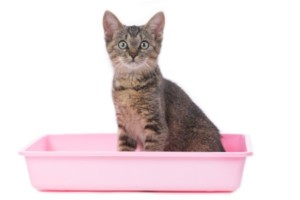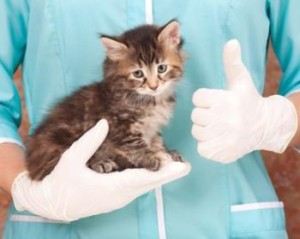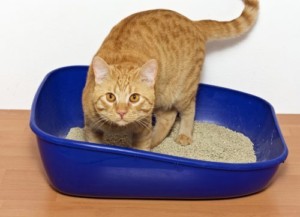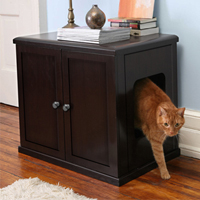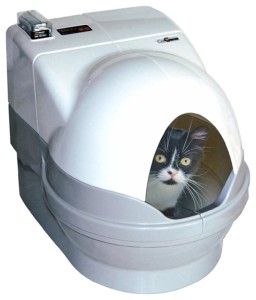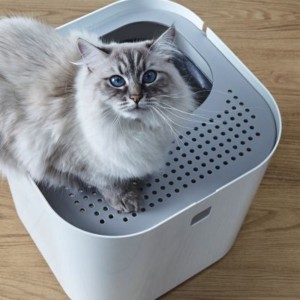Did you know that one of the most common reasons cat owners surrender their cats to shelters is because their cat is Not Using their Litterbox? This is such a common problem which causes endless headaches for owners and cats alike. But guess what? 9 times out of 10, this problem has a very simple solution! So the trick is to figure out the reason why, and provide a simple fix to ensure NUL No More.
The first thing to think about when your cat stops using their litterbox is medical needs. Particularly if this is a sudden problem, it is likely your cat has something medical going on, whether it be bladder stones, or crystals, or something similar to that. So first things first, take your kitty to the vet. They will likely ask for a urine sample to rule out any medical issues, and diagnose anything that could be causing the sudden lack of box usage. If your vet gives you the all-clear, this is both good and not so good news! The good news is that your kitty is perfectly healthy, but the not-so-good news is that you have to play detective a little bit to figure out what the problem is.
The next thing to look at is environment. This can really be broken down into four parts:
1) Type of Litter
2) Placement of Box
3) Type of Box
4) General Environmental Changes
Now, the first part is pretty self explanatory! Do your best to listen to your cat’s needs and give them the type of litter they prefer. Many cats prefer clumping litter to non-clumping, so try to switch things to up make them happy! If you have pellet litter, try clay or sand, and vise versa. Here’s a personal example: I had a foster kitten many years ago who would constantly pee on my bed. He had two litterboxes filled with pellet litter, he knew where they were, and he chose to avoid them. So I thought to myself: “hmm he pees on my bed which is a pretty soft material, I wonder if he doesn’t like the feeling of pellets under his toe beans”. So I switched to a clumping clay litter, and sure enough, he never missed the box again!
Secondly, think about the placement of your cat’s litter box(es). Most cats prefer their boxes to be in a quiet, undisturbed part of the house. They feel vulnerable when they are going to the bathroom, so they generally like to be in a corner rather than in an open space where a hypothetical predator could reach them from any side. Try to keep your cat’s box away from noisy areas such as doorways, washing machines, busy parts of the house, and tuck them into a nice quiet corner where they can go in peace.
Next, think about the type of box you have provided for your kitty. For the same reasons as the previous point, a lot of cats prefer covered boxes to open ones because they feel more secure and less vulnerable. It is a great idea to give your cat one covered box and one open box to see which they prefer more! If they consistently use the covered one, you can slap a cover on the open one to make it more enticing, and vise versa. Additionally, it is so important to make sure that your cat’s box is the right size and shape for them. If you have a large kitty, make sure the box is big enough for them to comfortably fit in! If you have a senior cat, make sure the edges are low enough for them to step over without hurting themselves. If it is easier for them to go on the carpet because they are uncomfortable getting in/out of their box, they’ll make that choice!
Last but not least, keep in mind any environment changes that may have occurred right around the time your cat stopped using their box. This occurs very commonly when a new pet or child is introduced into the home, or when families move homes. The cat feels put-out, out of place, and uncomfortable. They don’t know how to express their behavior so they act out! Do you best to help ease your cat’s transition through whatever change is occurring. Put out extra boxes and add some cat-attract for enticement. Of course, they probably need extra cuddles and treats as well to help them through! Most importantly, give them time. Cats are notorious for taking their sweet time with adjusting to change, and more often than not, they figure things out on their own terms. Be patient with them, and teach them the right things to do with positive praise and treats!
With each of these options, it important to keep variety in mind! While you’re figuring out what your cat likes best, give them options to make communication a little bit easier. There is a general rule that for every cat in the house, there should be 1 litter box plus 1. For example, if you have four cats, you should have five litter boxes. So use that as an opportunity for choices! Put out five different kinds of litter in a variety of types of boxes in separate areas of the house. Chances are, your cat will choose the one they like best, and you can begin eliminating the boxes they don’t use. Additionally, it is so important to keep litter boxes clean! If you think something smells bad, chances are your cat does too. Just like people prefer to use clean bathrooms, so do cats… so their chances of using their boxes appropriately are a lot higher when their boxes are clean and fresh. A little common sense goes a long way with these finicky creatures 🙂


